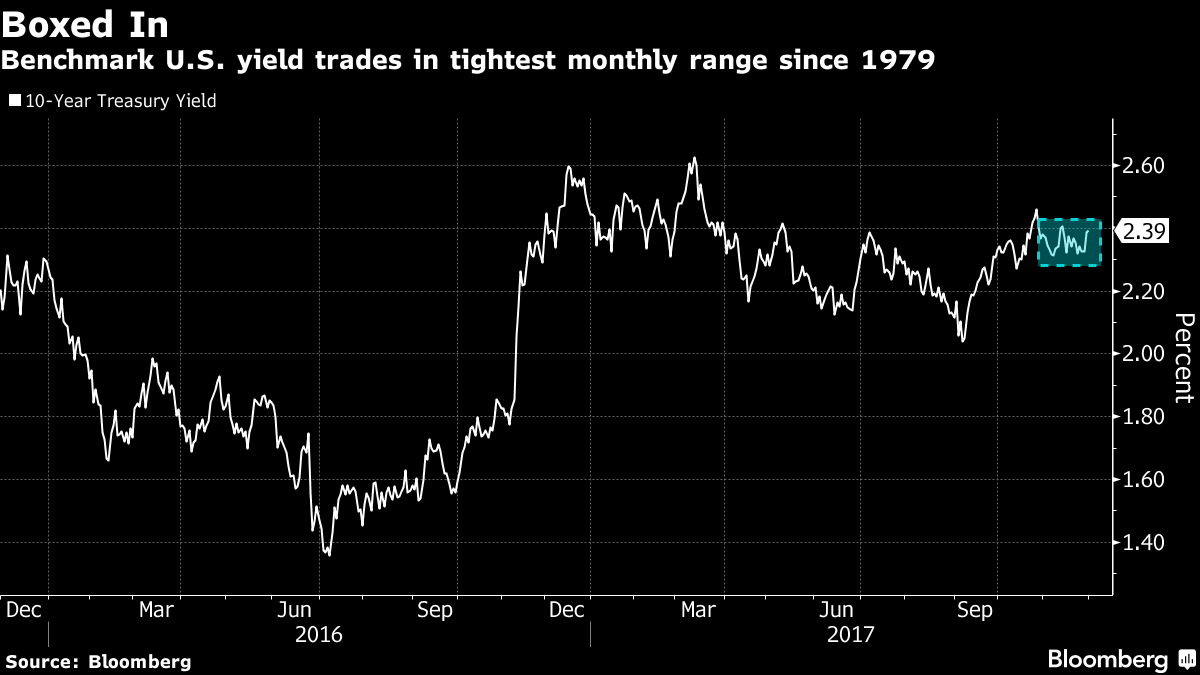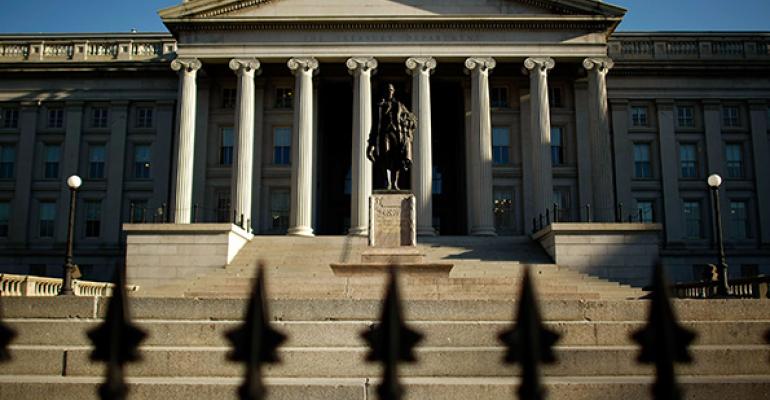By Brian Chappatta
(Bloomberg) --For all the hullabaloo around the flattening U.S. yield curve in November, the 10-year yield is still on track for its least turbulent month in almost four decades.
The note’s yield, which serves as a benchmark for everything from U.S. mortgages to borrowing costs for municipalities, fell in November to as low as 2.3 percent and topped out at 2.41 percent. That’s the narrowest range since 1979. Even with volatility largely suppressed, the rate has swung about 32 basis points on average every month over the past five years.

With the Federal Reserve sticking to its projections for policy tightening, buoying short-end rates, the spread between two- and 10-year maturities has fallen in November by almost 16 basis points, the most since February 2016. The gap from five to 10 years closed the most since 2014.
To Jim Vogel, a strategist at FTN Financial Capital Markets, the theme in the $14.3 trillion Treasuries market has been simple, and explains the 10-year note’s tranquil stretch: “Longer bonds win and shorter bonds lose.”
“Along with the direction of economic news -- not too hot and certainly not cold -- bond investors are content in their Fed outlook and that leaves the five-year as the pivot for the yield curve,” he wrote Wednesday in a note.
The difference in the performance among maturities is stark. With the Fed poised to raise rates in December and keep going into 2018, the two-year yield has increased 44 basis points in the past three months, the steepest climb since 2008. Meanwhile, the 30-year yield is 2.83 percent, down from 2.88 percent to start November.
That leaves the 10-year note somewhere in the middle -- it’s not an all-out duration grab, nor is it a short enough maturity to swing much on Fed bets. That makes it even more sensitive to technical indicators.
“The 10-year yield remains entrenched in the consolidative range,” Marty Mitchell, an independent rates strategist and formerly head government bond trader at Stifel Nicolaus & Co., wrote in a report Wednesday. “Trade it from both sides against support and resistance.”

To be fair, trading across the curve has been relatively orderly, judging by Bank of America Corp.’s MOVE Index, a measure of bond-market volatility that isn’t far from the record low set this month.
December holds the potential to shake things up. For starters, Senate Republicans’ tax bill is making its way through the chamber, and a vote could come as soon as Thursday. The Fed’s rate decision on Dec. 13 brings with it an update of policy makers’ projections, known as the “dot plot.” And North Korea just launched another intercontinental ballistic missile, prompting fresh threats of U.S. sanctions.
Then again, the 10-year note barely budged at the start of November, even after President Donald Trump named his nominee for Fed chair and some bond investors warned of a “moment of truth” for Treasuries with the yield above 2.4 percent.
For now, traders have never felt more at home in the range.
To contact the reporter on this story: Brian Chappatta in New York at [email protected] To contact the editors responsible for this story: Benjamin Purvis at [email protected] Mark Tannenbaum




